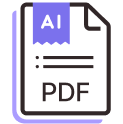
How to automate three-way PO match in Parabola
- Import purchase order, receiving notes, and invoice data using steps like Pull from CSV file, Pull from inbound email, and Pull from PDF.
- One by one, standardize these datasets into a uniform format, ideally one that matches your internal format. Using steps like Edit columns and Extract with AI, include key fields such as PO numbers, item descriptions, quantities, and prices from your imported datasets.
- Once your datasets are standardized, use the Combine tables step to join POs with receipts and invoices based on shared identifiers like PO numbers.
- Add logic with the Add if/else column step to identify mismatches in quantity, price, or item details.
- Filter mismatched records using the Filter rows step for review or resolution.
- Generate a discrepancy report and action on your data, using steps like Visualize, Send to Google Sheets, and Email a file attachment.

Video overview
Why Parabola







Parabola has given our team an intuitive yet robust platform that simplifies the day-to-day process of data automation, transformation and storage. Parabola has added to team productivity exponentially.
What is a three-way PO match?
Three-way PO match reconciliation is the process of comparing purchase orders (POs), receiving notes, and invoices to ensure that what was ordered matches what was received and billed. This process prevents overpayments, ensures accurate accounting, and identifies discrepancies that need resolution.
How to do a three-way PO match in Parabola?
Parabola automates the three-way PO match process by importing data from procurement systems, warehouse receipts, emails, and invoices — alerting your team of any discrepancies across the documents in real-time. Whether data comes in totally clean or needs to be mapped to your internal format, you can use Parabola to standardize SKUs, dates, and currencies across documents before combining data on identifiers like PO number and SKU. Take it a step further and use this data in your vendor scorecard Flows to grade vendors on billing and receiving accuracy.
Tips for doing a three-way PO match in Parabola?
- Standardize column headers and data formats early in the flow to ensure clean joins across datasets.
- Instead of uploading all three documents at once, you can also take it step-by-step: Import your PO first, ensure you're able to clean and format the dataset, then move on to your receiving note.
- Since these key documents are so frequently shared over email, consider setting up an auto-forwarding rule to have invoices automatically flow into Parabola
What other resources are available on three-way PO match reconciliations?
- To start building your three-way PO match reconciliation Flow, use the Template above and check out Parabola University.
- Learn more about how to set up an auto-forwarding rule in Parabola here.
- Use AI to convert data from purchase order PDFs to spreadsheets for free.
- Automate purchase order tracking to improve inbound visibility, prevent stockouts, and reduce rush shipment costs.
What are best practices for three-way PO match reconciliation?
Best practices include standardizing PO numbers and SKU formats across procurement, receiving, and billing systems; reconciling at a cadence that reflects your processing volume (e.g., daily for high-volume teams); and automatically flagging mismatches only when quantities, prices, or vendor names deviate. For deeper workflow guidance, see our complete guide to purchase order tracking.
What software is used for three-way PO match reconciliation?
Many teams use ERP platforms or procurement systems, combined with spreadsheets or manual accounting tools, to compare POs, receipts, and invoices. Some employ AI data extraction tools or reconciliation modules, but these frequently require technical support. Parabola stands out by enabling operators to connect document workflows and systems without code.
Why do procurement teams often miss discrepancies in PO matching?
Discrepancies frequently happen due to malformed or partial data in PDFs, delays in receiving updates, or misalignment between purchase and receiving item codes. Without automation, teams often reconcile line-by-line, which is time-intensive and prone to errors. Prioritize workflows that clean and standardize data early.
What are some real-world examples of purchase order management automation?
Hundreds of Parabola users are currently using our AI-powered workflow builder to automate purchase order management processes. Below are three real stories, from real customers.
- How Seed scaled operations and saved 500+ hours a year with Parabola
- How Rhone doubled their operational capacity with Parabola
- How Magic Spoon is building an automation-first culture and saving 500+ hours a year







